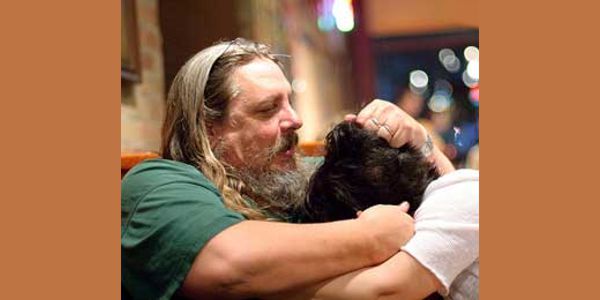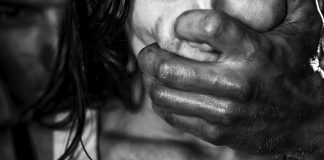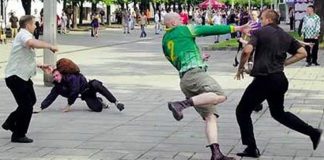Some people argue that it’s sissy fighting, while the more sexists condemn it as fighting like a girl. Karate traditionalists argue that it’s not proper or that it lacks artistic form. Some law enforcement agencies have found that it’s the best thing since the invention of the siren, while other police agencies refuse to add it to their defensive tactics repertoire.
Hair techniques may be controversial, but anyone who has experienced them whole-heartedly agree that they hurt. Indeed, hair pulling and twisting causes excruciating pain. When a handful of hair is twisted even slightly, there is an agony not unlike a hundred pins piercing the scalp.
There are few people who can tolerate having their hair twisted or pulled. The most tolerant are those under the influence of alcohol. Since alcohol is a depressant, the state of inebriation will often dull the part of the brain that registers pain and the person will either not feel pain at all or will feel it only intermittently.
Although rare, there are some people who simply have a high pain threshold in their scalp. This type of person can have his hair twisted all day long and he will not feel pain. Nonetheless, hair pulling techniques can still be used on these people, but in a way that upsets their balance.
Although the entire scalp area is vulnerable, the most sensitive areas are those just above the back of the neck, above the ears and just above the forehead. Any facial hair, such as a beard, moustache, sideburns and eyebrows can be used and, in fact, are frequently more vulnerable than the scalp.
PAIN AND LEVERAGE
Although hair techniques can be used in a number of circumstances, we will look at their applications in two types of situations. The first will involve using the hair as a leverage point for a takedown technique; the second is the use of pain as a tool to gain control.
Hair techniques can be applied by twisting the hair or by pulling it. As a general rule, twisting is used to apply pain and pulling is used to upset an opponent’s stance. The grip is slightly different for each method.
Twisting is applied by sinking your hand deep into the hair, tight against the scalp. You then gather as much hair as possible and close your fingers into a tight fist. It’s important that there be no space between your fingers and your opponent’s scalp so you are gripping the roots and the shorter hairs which are the most sensitive.
If you want your opponent to go forward, you simply rotate your fist forward. You are communicating with him using the universal language of pain.
Pulling the hair is not as painful as twisting it, but its function is more to guide the opponent’s momentum. When pulling, it isn’t necessary to plunge your hand in as deeply as when twisting, nor is it crucial to pull at the more vulnerable parts of the scalp. It’s of greater importance to grab in a place that enables you to pull and take your opponent in the direction you want him to go.
When you apply force by pulling the hair at the highest point on your opponent’s body, it’s quite easy to upset his balance and leverage him to the ground.
When using a hair technique for a takedown, you should always be break your opponent’s balance by forcing him to bend forward, backward or sideways. One advantage of upsetting his balance first is that the average person’s natural fear of falling makes it difficult to effectively block or counter your technique.
A hair technique works in these situations because it applies leverage against an opponent whose balance is already off center.
When pulling or twisting at the highest point on your opponent’s body, you are adding impetus to the direction his unbalance is already taking him. There is a martial arts principle that says, “Where the chin goes the body follows.” The same can be said of the hair. It can be used to move an opponent left, right, up or down. When pulling or twisting the hair, the body will follow because it’s either trying to escape the pain or because you are guiding its momentum.
TO SUPPLEMENT OTHER PAIN HOLDS
The second concept involves using pain from the hair twist to either gain or maintain control of an opponent. This is directly applicable to grappling holds used in chin-na, jujitsu and police defensive tactics. As is the case with takedown techniques, the hair can be used as a sole method of control or as a supplement to other techniques.
One of the factors that makes hair twisting an excellent tool for control is that it doesn’t leave any permanent injury. In most cases, the pain subsides a few seconds after the hold is released. The exception is when a tremendous amount of force is used in applying a technique, which may cause pain for several hours.
The use of pain is effective to solicit cooperation from an opponent who is trying to escape or is continuing to resist after he has been subdued.
The amount of paint you apply with the hair twist depends on the degree of fight or resistance your opponent is making. If his resistance is slight, then you would apply a lesser amount of pain, as opposed to a greater amount of pain if his resistance is extreme.
PUNISHMENT AND REWARD
When using pain as a method of gaining control, you must reward your opponent when he cooperates. If you are angry and you are punishing him with pain that is so severe and of such a duration that it’s absolutely intolerable, you risk having your opponent go completely out of control.
The pain must communicate with him; it must give direction. It must tell him that when he fights he gets pain and when he stops, the pain stops, or at least subsides. If he believes the pain won’t stop and it’s more than he can tolerate, he will fight because he has nothing to lose. And you can be guaranteed that his fight will be fierce.
Let’s say you have taken your opponent to the ground in the prone position, but he wasn’t hurt by the takedown and begins to get back up. You can hold him in the downed position by getting behind him, grasping the hair on the back of his head with both hands and simultaneously twisting it in opposite directions: Your right hand twists clockwise and your left hand twists counter clockwise. This causes excruciating pain that will force his face hard into the floor and discourage any further aggression.
A slight variation of this technique involves using a hair twist to assist a failing joint lock technique. Say, the opponent is again lying face down and you are attempting to lock up his elbow and shoulder joint. But due to an error on your part, he starts to bend his arm to defeat your hold.
To avoid a muscle contest, you need to distract his attention momentarily away from his arm. With your free hand, grasp his hair tight against his scalp and twist. The moment his attention leaves his arm and focuses on the searing pain in his scalp, you must simultaneously reposition his arm and reapply the joint lock technique.
When practicing hair techniques with a training partner, you will find that once you have learned the proper way to grasp and twist hair, you need only to simulate the action from then on in your training session. This is because you won’t go full force more than a few times before your partner will want to quit.
CAN BE USED BY ALL FIGHTING ARTS
Hair techniques can supplement any fighting art. They can easily be added to the takedowns and grappling techniques of judo, and in karate of kung fu, they can be incorporated into punching and kicking.
Although hair techniques would never be allowed in a judo or karate tournament, they are very effective for street self-defense. Somersaults and fancy kicks have no place in the harsh reality of an alleyway or parking lot. Sometimes you have to fight ugly with ugly. Hair techniques are not pretty, but they are realistic, painful and effective.
This article appeared originally in Warriors magazine






